
Good explanation of the materials and techniques, choosing and
.
If you have any comments, observations, or questions about what you read here, remember you can always Contact Me
All content included on this site such as text, graphics and images is protected by U.S and international copyright law.
The compilation of all content on this site is the exclusive property of the site copyright holder.
Kokedama and Marimo,
Tuesday, 24 March 2020
Once is interesting. Twice is a coincidence. Three times or more? That's a trend. So it is with kokedama. I first learned about these Japanese moss balls when I reviewed Moss: Discover. Gather. Grow by Ulrika Nordström in December 2019. The book has an interesting description and series of directions on creating a moss ball with a plant crown. This was the first time I had ever heard of kokedama.
In January 2020 I reviewed The Complete Book of Ferns by Mobee Weinstein. What a coincidence! Moss balls with ferns, in a beautifully photographed multi-page section.

Good explanation of the materials and techniques, choosing and
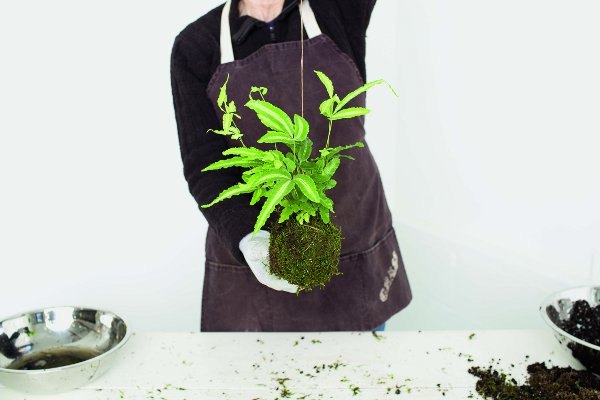
and using different ferns, display the kokedama on a tray or hanging up.
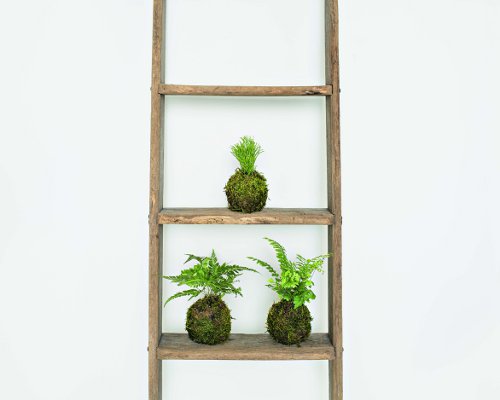
In February I went to the media preview for the New York Botanical Garden's orchid show. Marc Hachadorian is senior curator of orchids and director of glasshouse cultivation there. I reviewed his book, Orchid Modern. What I found within its pages obviously makes kokedama into a trend. You know what I'm going to say, don't you?
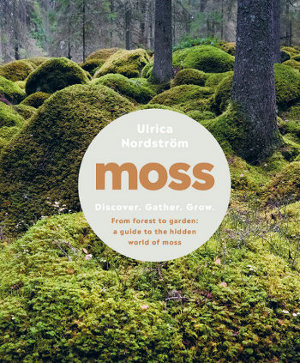 .
.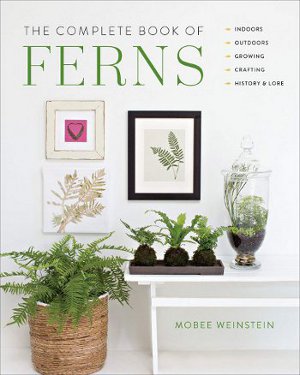 .
.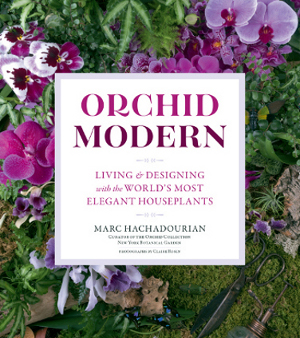
You're right. "Orchid Modern" has information on creating kokedama
with orchids planted in moss balls. And three or more times is a trend.
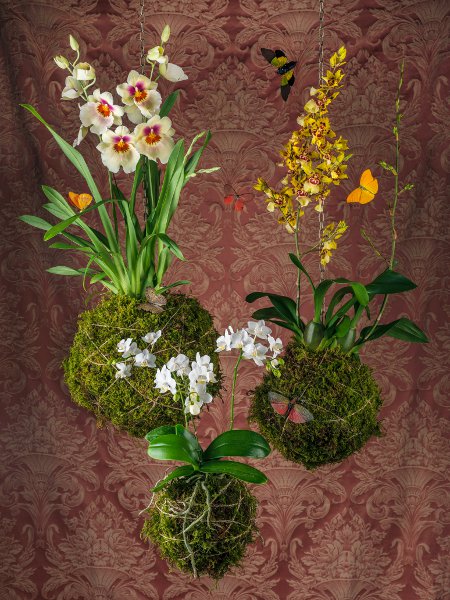
There's useful discussion of materials from the tools you'll need to the
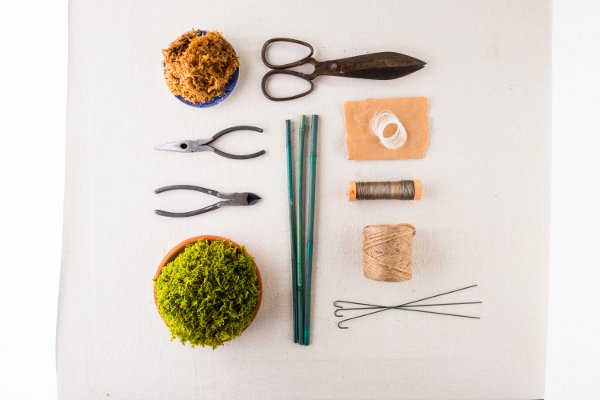
soil mixes and - of course - the mosses. Marc prefers purchased moss,
concerned that what is found in the backyard might have nematodes.
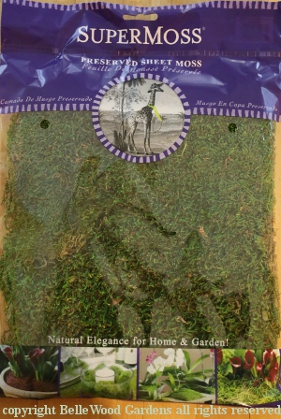 .
.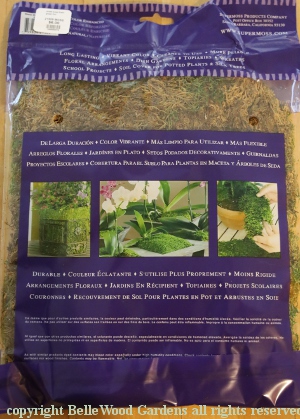
Not a problem. Sheet moss is readily available, dried and packaged, ready to use.
I bought the package you see here at the New York Botanical Garden. On-line
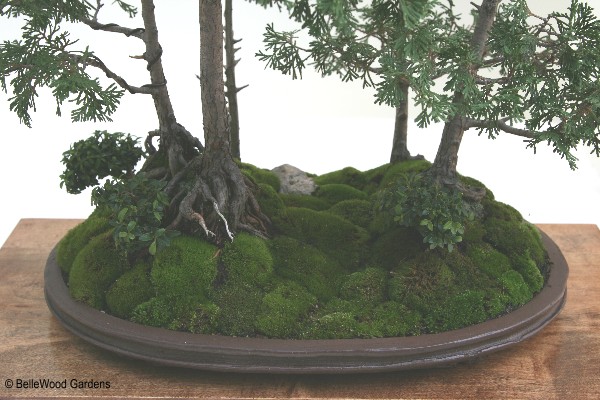
bonsai studios are another good source, for moss and also soil ingredients.
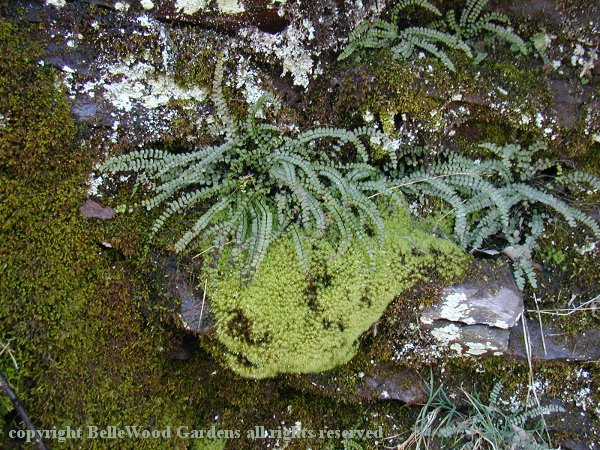
I have a new appreciation of the rock outcrops along my road, with ferns. And moss.
And Then There's Marimo
There is a different kind of Japanese moss ball. Actually , it is an algae not a moss. Marimo live in water. They are a rare growth form of Aegagropila linnaei (a species of filamentous green algae) in which the algae grow into large green balls with a velvety appearance. Found in shallow lakes with sandy bottoms in Japan and Northern Europe, gentle wave action occasionally rotates and turns the balls, keeping them round. They have become quite popular as an addition to aquariums. Be careful which fish you keep with them - bettas are good but other fish may destroy the marimo. Or, just keep them on their own. Which is what I am doing.

Friday, 14 February 2020: I stopped at a PetValu this morning. Didn't see any marimo where they had the aquarium plants. Asked at the front register, and the woman said it didn't sound familiar. I asked if I could talk to whoever managed the aquarium section. When paged, she came up, I explained, she said "Of course we do." and led me to a different stand where there were small tubs with either 3 smaller or 1 larger marimo, both priced at $8.99
My marimo are doing fine. I have them on a window sill where they get no direct sunlight. About every week or 10 days I empty the water out of their container, then roll each marimo between my palms to encourage their roundness. Add cold water, then return my three marimo to their watery home. I find them peacefully charming.
Round. No, not just round. Spherical. There's magic in a sphere. It englobes maximum volume for minimum surface. Nature appreciates the efficiency of spheres. Think of apples, oranges, more-or-less spherical eggs, droplets of water. Earth and moon. And now there is the appeal of marimo and kokedama. Say what? Japanese moss balls.
Back to Top
Back to March
Back to the main Diary Page